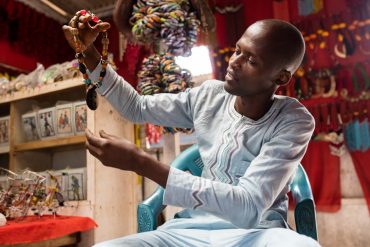Face masks are crafted from a wide array of materials, and global artisans strive to craft unique pieces from resources that are native to their own regions. Most work in woven cotton, largely because it performs better with high thread counts, making it a strong filter against transmittable, airborne particles. But each region adds its own unique touch. Thailand, for example, utilizes muslin and hemp, while Bali uses rayon and polyester, two synthetic fibers that create a filter-like effect to enhance protection. Mexico frequently works with nylon, elastic threads, and acrylic painted fabrics for a comfortable yet detailed design. India incorporates viscose, linen, silk and jacquard, which is a highly-textured pattern that is woven into fabric to produce a raised effect in the design. Fabric masks are most effective when multiple layers are threaded together to create an absorbent, protective barrier. Through face masks, artisans have found creative ways to bring their beautiful designs to the public and provide a livelihood for themselves and their families, especially when travel and tourism is reduced.

